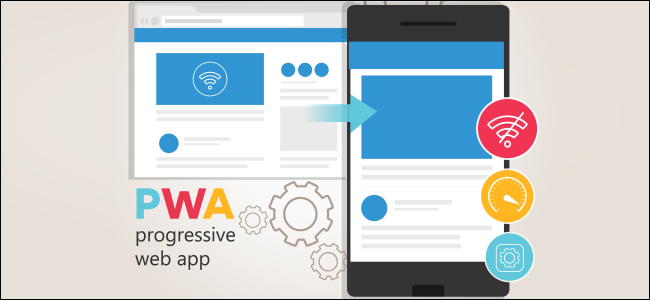Introduction To PWA – Progressive Web App And Its Use For Business!

Lately, there has been a lot of buzz around Progressive Web Apps (PWAs), with many claiming it to be the future of web development, especially in terms of mobile devices. So, today in this post, we’ll discuss what Progressive Web Apps are, what are its features, signs that a business needs PWA and its use for businesses. Read below:
Table of Contents
What is Progressive Web App – PWA?
At its core, a Progressive Web App (PWA) is simply a Web application that uses modern Web techniques to provide a native application experience to users. These are progressively enhanced Web applications for implementing features such as caching, background synchronization, and push notifications.
Although PWAs have been around for more than three years, the answer is rather daunting. Few major players have adopted this philosophy, but most have not yet joined. Chrome and Mozilla are perhaps the best browsers to test their PWAs, since Apple still needs to get into that.
Do PWAs need app stores’ approval?
The technology allows you to create an app without having to go through the App Store (iOS) or Google Play (Android) process. Currently only Edge / Windows 10 is forcing the PWAs to be in the store. This means that you, as a programmer, can install applications on iOS, for example, without having to go through approval processes.
Maybe that’s why in the iOS 11.3 update, Apple quietly reported launching support for the basic set of new technologies behind PWAs. Still without much fanfare, but without ignoring the trend, the company seems to be looking to the future.
Does a brand / company need an application and a website, or just the PWA?
When we talk about a development using PWA, this means we expect things like push notifications, synchronization, the website / application working offline, having a certain aspect / design to feel like a native application, and being able to be configured in the home (on the device screen).
These are things we traditionally did not have available on the web. But thanks to new browsers that increasingly support HTML5 specifications and JavaScript advancements, we can begin to build some of these features.
Overall, Progressive Web Applications are:
- Progressive: It works for all users regardless of browser choice because they are built with progressive enhancement as a basic principle.
- Responsive: Adjust to any screen format: desktop, mobile, tablet or whatever is next.
- Independent Connectivity: It works offline or on poor quality networks.
- App-like: The user has the same interactions and navigation as in an application.
- Updated: Always updated thanks to the upgrade process.
- Safe: Uses HTTPS to ensure that content is not tampered with.
- Discovery: They are identifiable as “applications” thanks to W3C manifests and the service worker’s registry scope, allowing search engines to find them.
- Re-engaging: Make re-engagement easy with features like push notifications.
- Installable: Allow users to “keep” the apps they find most useful on their home screen without the hassle of an app store.
- Linkable: Can be shared easily via URL and do not require complex installation.
Highlights of PWA for business
First, PWA offers much greater retention than native apps. Because there is already greater indexing and engagement on a web site, the chance of adoption is greater. Application projects, in turn, become leaner and integrated with web solutions.
The second point that needs to be highlighted is the savings generated with the PWA. In many cases, the need for an application for your business can be solved with a PWA. E-commerce business, for example, can earn more by investing in a PWA, instead of creating a native app.
Another important and attractive factor, not only for developers, but especially for customers, is that the time spent for application development is much lower with PWA. And this also provides cost savings.
And, because it does not have to be downloaded on smartphones, it can be used more easily and more reliably by users. This is not to say that PWA will take the place of traditional apps, but it is a good alternative for specific projects.
However, the PWA path is not yet complete. Companies like Google, Microsoft and Mozilla see PWA as the future and natural evolution in application design. However, Safari, Apple’s browser, still does not support two crucial features: push notifications and offline operation. With this, it is still necessary for the company to take this step forward.
All this leads us now to another question: does the company really need a PWA?
Below, I’ll make a brief list that may indicate that you need a site in PWA:
Signs that PWA might be appropriate for your business
- Content needs to be constantly updated, such as stock quantity, product price, or any other data in real time;
- Need of chat or communication platform, requesting update in real time and notifications (push), for example announcement of new product in the market;
- Preference of users to download data to browse offline, such as reading newspaper articles;
- When a user needs to check data several times, knowing that content can change constantly
To materialize the information above, we can consult some Market Cases:
Companies such as The Washington Post, Forbes, Financial Times and Twitter have been using the feature since last year to make it easier for readers to see. But one of the most interesting, or rather impressive, cases I read was that of Alibaba, the world’s largest online B2B platform, worth checking out.
Alibaba increased conversion by 76% on the mobile web with the use of the Progressive Web App
Result
- 76% growth in conversion between browsers
- 14% more monthly active users on iOS;
- 30% on Android
- 4X more interactions add to home
Many applications are opening up for the use of PWA. Companies need to rely on specialists who are eyeing the innovations that are already a reality in the world market and invest in the development of applications that are already showing results in other countries.
Do not be afraid of the novelty, the evolution is constant and visibly faster. I know it’s not easy to keep up with the movement, so my tip is for you to invest in your employees and your technology partners.
Today, innovation is no longer a differential; differential is to apply innovation faster.
“Done is better than perfect.”
– Sheryl Sandberg
Final considerations
Developing an app does not mean that all your problems will be solved. Often, to fit the reality of the investment, solutions like PWA can make more sense.
Everything indicates that the PWA, in the future, will be a more accessible and widespread technology. Just as the boom of responsive design and the advancements of HTML5 and CSS3, new possibilities emerge. So, turning your site into an app can be easier and more practical than before! The team of Clustox Company realizes the importance of PWA and offers services to its clients accordingly.





